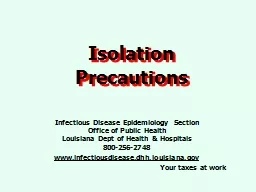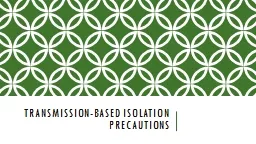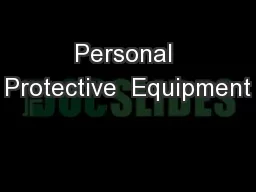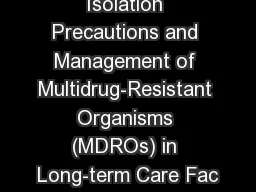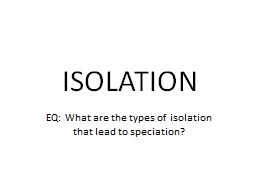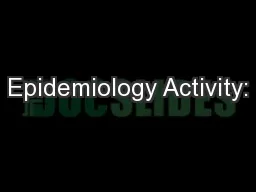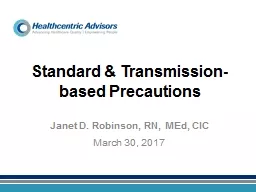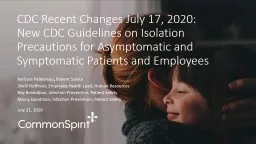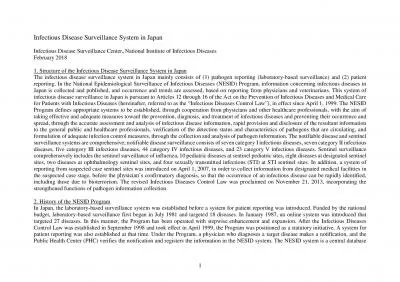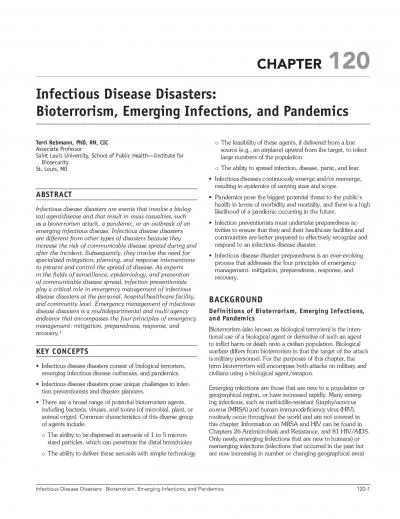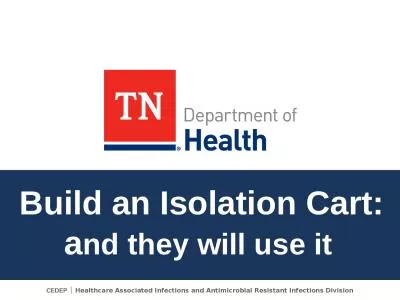PPT-Isolation Precautions Infectious Disease Epidemiology Section
Author : grewhypo | Published Date : 2020-06-22
Office of Public Health Louisiana Dept of Health amp Hospitals 8002562748 wwwinfectiousdiseasedhhlouisianagov Your taxes at work Isolation guidelines in Institutions
Presentation Embed Code
Download Presentation
Download Presentation The PPT/PDF document "Isolation Precautions Infectious Disease..." is the property of its rightful owner. Permission is granted to download and print the materials on this website for personal, non-commercial use only, and to display it on your personal computer provided you do not modify the materials and that you retain all copyright notices contained in the materials. By downloading content from our website, you accept the terms of this agreement.
Isolation Precautions Infectious Disease Epidemiology Section: Transcript
Download Rules Of Document
"Isolation Precautions Infectious Disease Epidemiology Section"The content belongs to its owner. You may download and print it for personal use, without modification, and keep all copyright notices. By downloading, you agree to these terms.
Related Documents

